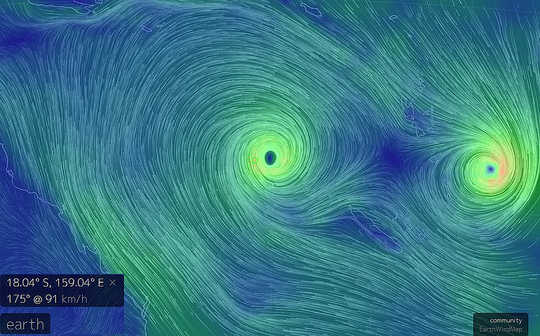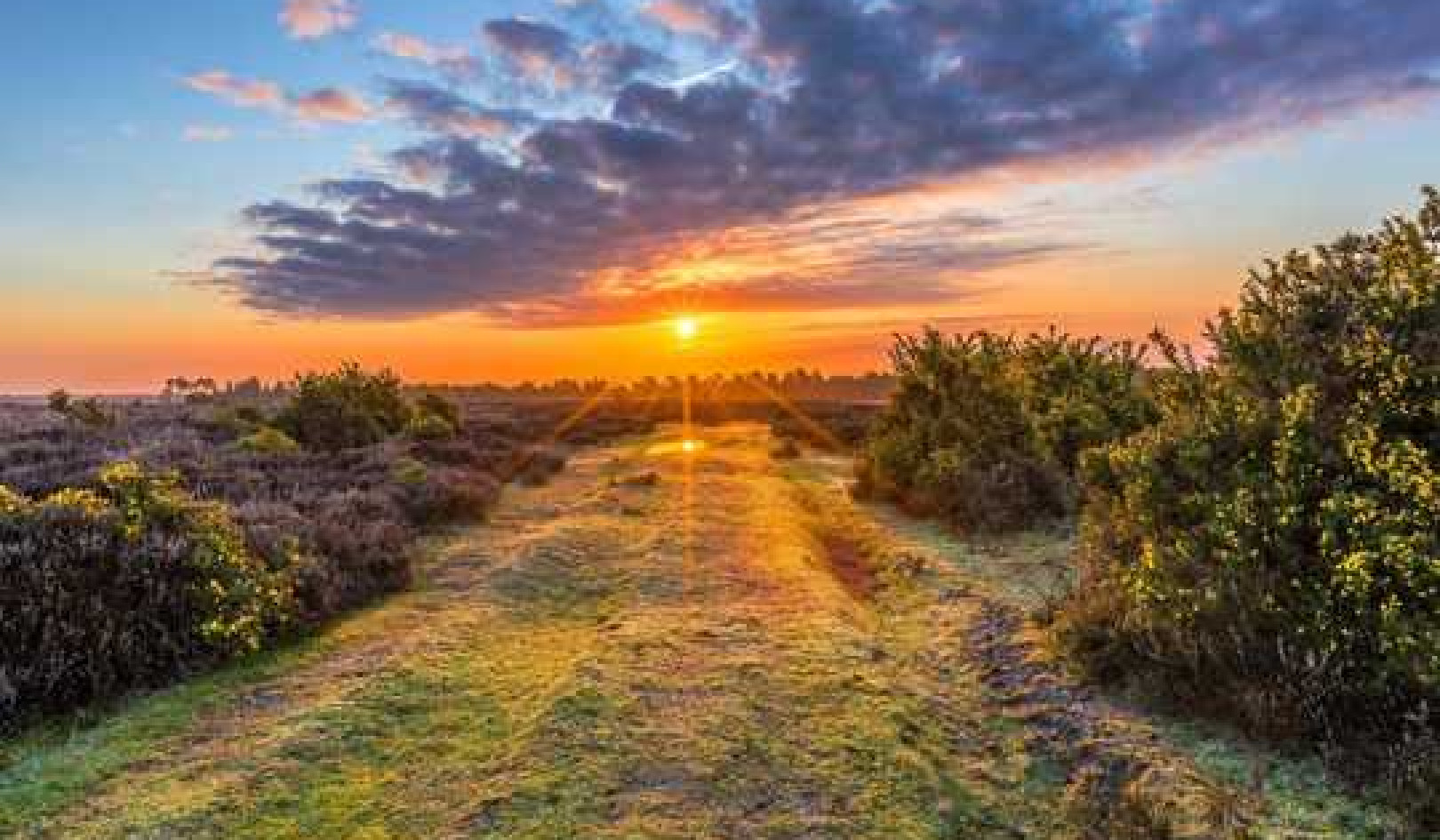
2016-02-12 Cyclones Tatiana & Winston. Photo credit: Flickr
Cyclone Winston struck Fiji on February 20, 2016, leaving a trail of destruction.
Winston was a Category 5 cyclone (the strongest rating) with reported wind speeds of almost 300 km per hour. This made it among the strongest cyclones ever to make landfall globally, and the strongest recorded in the Southern Hemisphere.
Cyclone behaviour
Cyclones form over warm water, typically above 26?. This largely confines them to forming in tropical latitudes, although once formed they can then move outside the tropics.
In the South Pacific, typically around nine tropical cyclones are recorded on average each year, but there’s a lot of variability year to year. They are most common in January through to March, but can occur as early as November or as late as May.
In the past 30 years or so, several severe tropical cyclones have affected Fiji, so it’s not unusual for Fiji to experience severe cyclones.
The figure for Cyclone Winston of wind speeds of up to 300 km per hour refers to sustained wind speed, averaged over 10 minutes. Sustained wind is typically used for measuring cyclone intensity, but damage is also related to wind gusts, which are measured over much shorter periods. Cyclone Winston reportedly produced gusts up to 325 km per hour.
Cyclone observers measure wind speeds in two ways. First, they can estimate the speed from satellite images. Very intense tropical cyclones have a very pronounced eye and are very symmetrical, and there are graphical relationships between those images and direct wind measurements. In the Atlantic Ocean wind speeds in severe cyclones (known there as hurricanes) are measured using planes. The other method is to use wind observations on the ground.
Cyclone Winston took a very unusual track towards Fiji, performing a “loop-the-loop”. It started west of Fiji before moving south, then back to the north, and finally approaching Fiji from the east.
The strongest winds for Southern Hemisphere tropical cyclones are on the left of the cyclone, because that’s where the winds are adding to the forward motion of the storm. To figure out which side of a cyclone is which, stand facing the direction in which the cyclone is moving. The cyclone’s left is then your left. So for Cyclone Winston approaching Fiji from the east, the left-hand side of the storm was to the south.
This is also the region where the storm surge is highest. A storm surge is a dome of water pushed ahead of the storm. In some locations in Fiji there is also the potential for storm surge as well as strong winds.
Typically, cyclones are pushed around by a combination of factors. Often they are pushed around by winds averaged through the depth of the atmosphere (from the surface to 10,000 metres or so). So if the wind direction is unusual here, then the cyclone may track in an unusual direction. Other factors related to the rotation of the earth may also cause a cyclone to track in weird directions.
Is climate change affecting cyclones?
It’s difficult to say what the trends are in cyclone intensity in the South Pacific, as only limited data are available since the 1980s. Trend analyses in this region have given ambiguous results. Frequency of cyclones in the Australian region has been decreasing in recent decades. In the South Pacific region as a whole, trends appear weak.
We have just seen the peak of one of the strongest El Niño events on record. El Niño is related to the movement of warm water in the Pacific Ocean, so it’s not surprising that it has an influence on cyclones.
Typically, during El Niño events, cyclones form and track further east in the South Pacific. So places that don’t typically see cyclones, such as Tahiti, sometimes experience them during El Niño.
In the South Pacific, if you’re west of the longitude 170? east – just west of Fiji – you get more tropical cyclones during La Niña and fewer during El Niño. East of that line it’s the opposite: you get more cyclones during El Nino and fewer during La Niña. Fiji is between those zones, so gets a bit of both.
We also don’t know how climate change is affecting cyclones in the South Pacific. Some analyses suggest cyclones are tracking further south. But it’s too early to say how climate change may have already affected cyclone intensity in our region.
Related Books
at InnerSelf Market and Amazon























